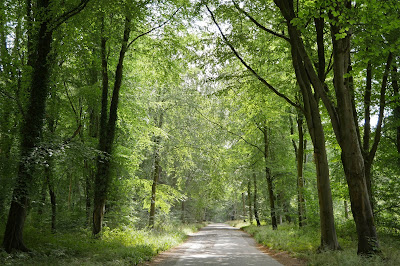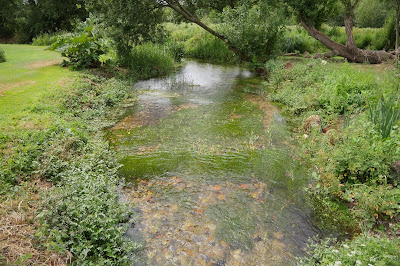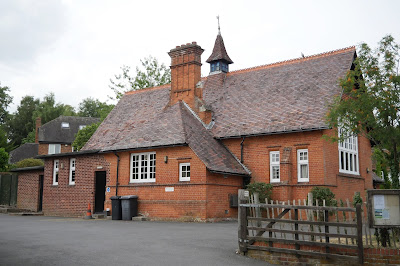Grand Avenue
Savernake covers some 4500 acres (7 square miles). The royal forest established in the 12th century covered an area of some 150 square miles, but this would have included villages and open ground as well as woodland. It was put into the care of Richard Esturmy has passed down from father to son (or daughter, on four occasions) in an unbroken line of hereditary "forest wardens". The current Wardne is David Brudenell-Bruce, Earl of Cardigan. It is now the only ancient forest in Britain still in private hands. The private status of Savernake is maintained by shutting the forest to the public one day per year. (All this from Wikipedia.)
I started from Postern Hill and followed the path into the woodland. I was struck first of all by the size of some of the trees - ample evidence that this is an ancient forest.
I loved this dramatic fallen tree trunk left by the side of the path.
Soon afterwards I turned left into White Road, more of a track really, and noticed on Google maps that the Cathedral Oak was just off to the left of the path. I naturally made a detour to see this magnificent specimen which is nearly 10m in girth. It is at least 1000 years old; and probably the seconds oldest tree in Savernake, and maybe the second oldest in the UK according to Wiltshire Walks.
Returning to White Road I followed it to where it met the A4 on the north side of the forest and then made a 90 degree turn to walk down the Grand Avenue, passing by this lovely group of Teazles.
I have to say that although planned by Capability Brown, the Grand Avenue was not much fun to walk along. The road surface is very rough and every time a van or car went by vast clouds of noxious dust were thrown up. After a mile and half of this I was delighted to reach the junction called Eight Walks, where (reasonably enough) eight paths meet. The route led now along Great Lodge Drive, which was a much more inviting prospect.
The adjoining fields gave way to light woodland and I managed a couple of butterfly pictures - a lovely Brown Argus ...
... and a Small Skipper.
There were also a couple of sightings of a Silver-washed Fritillary, one of my favourite woodland butterflies.
The delightful Great Lodge Drive ended near Christ Church (by T H Wyatt, 1851 for the Marquis of Ailesbury, the then forest warden). It was declared redundant in 1979 and is now a rather splendid private house.
The final leg was in many ways the best of all: a meandering narrow path through the forest, roughly parallel to the A346. I had many more Silver-washed Fritillary sightings, but just one photo opportunity: this rather battered specimen. I did see a mating pair engaged in the rather wonderful ritual where the female flies in a straight line and the male loops above and below her.
This path brought me at length to the car park.
Conditions: very warm, but quite cloudy.
Distance: 5.5 miles.
Map: Explorer 157 (Marlborough & Savernake Forest).
From: here.
Rating: four stars. Really enjoyable walk (apart from the Grand Avenue). I am looking forward to exploring other parts of the forest.



















































